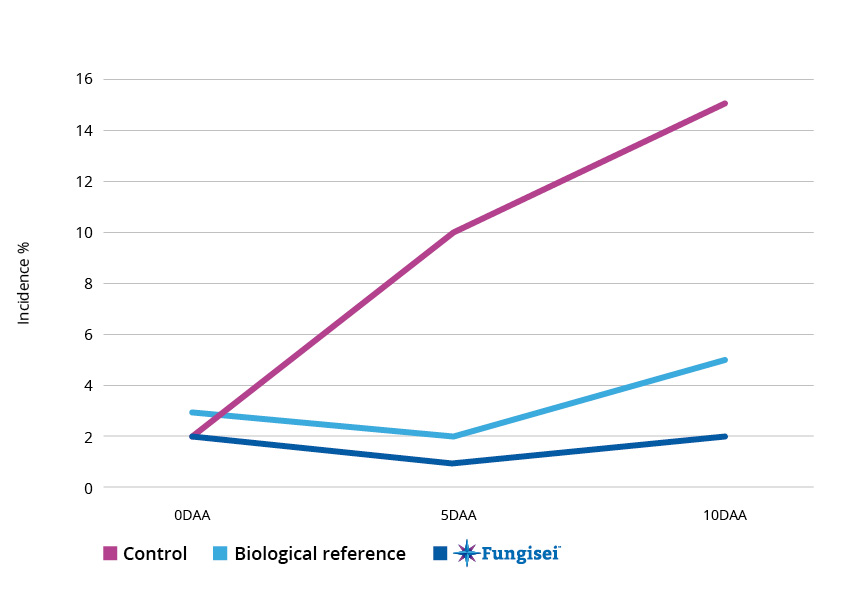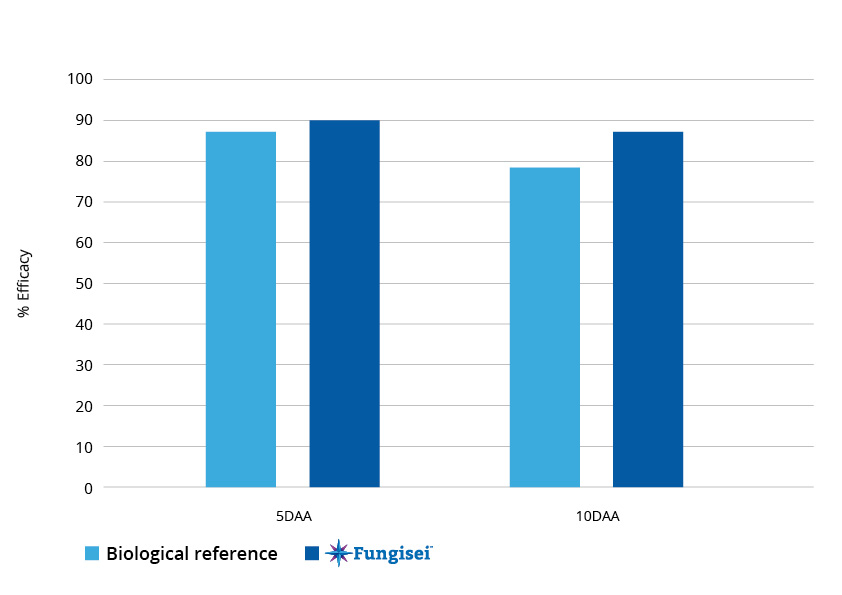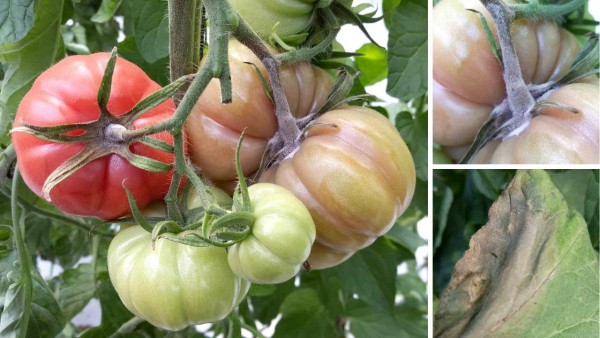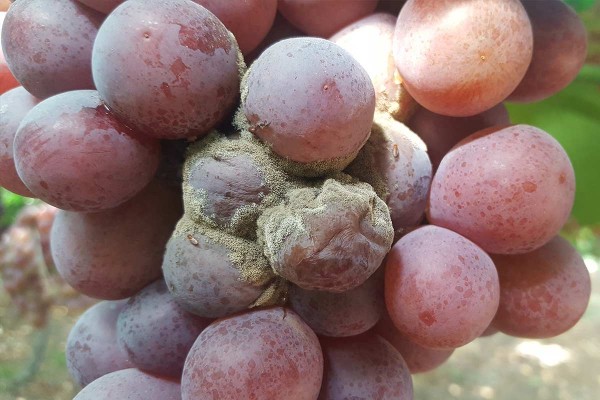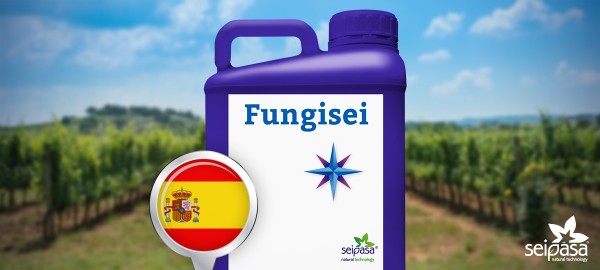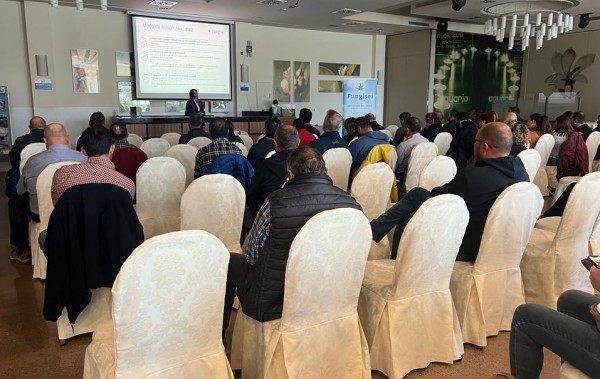Botrytis in blueberries: when prevention is key
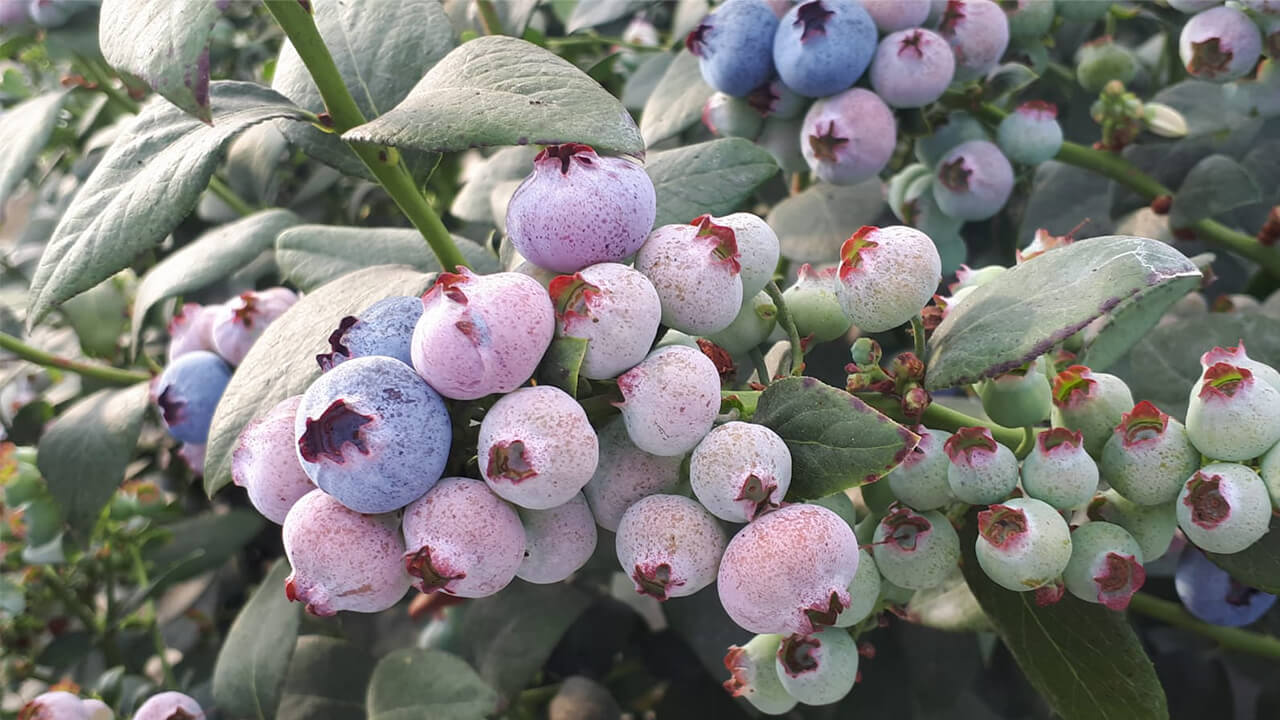
Blueberry cultivation
Botrytis in blueberries has become one of the major threats to this crop, both in the field and post-harvest. As blueberries acreage continues to increase in countries where the fruit id grown for export, growers are becoming increasingly concerned about the impact of a disease that can cause up to 20% of the harvest to be lost.
Botrytis is the cause of grey mould, also known as blueberry rot. It is a difficult pathogen to control because it can occur at any stage of the crop cycle, from flowering to harvest and even post-harvest.
The conditions for the appearance of botrytis in blueberries are related to high humidity and rather cool temperatures, although the disease develops in a very wide range of temperatures, from 0º to 30º or 35º.
Although environmental conditions do play a role, it is not only the weather that we should be aware of when it comes to a possible infection with grey mould or blueberry rot. Botrytis is a fungus that adapts well to the host plant in order to germinate. In addition, wind, rain and insects act as vectors to carry the pathogen’s spores to the leaves or other organs of the plant.
In other words: in many cases, the pathogen is already in the field. Flower debris left on the ground is a potential source of inoculum that releases and disperses it, so controlling this disease is not an easy task. On other occasions, we can find cases where botrytis attacks the flower (flowering is one of the times when the disease is most prevalent) but remains latent and becomes active later in the crop cycle, making it difficult to control the pathogen’s development.
It is easier to identify and recognise the symptoms and damage caused by botrytis on blueberries. It can be seen on the fruit by a more than visible rot that causes the epidermis to peel away. The fruits are eventually covered with a grey powder, giving them a mummified appearance. Circular brown spots can be seen on the leaves and petals.
Fungicides for botrytis in blueberries
The management of botrytis in blueberries should be aimed at prevention, i.e. minimising the presence of inoculum or, if infection does occur, preventing it from spreading to flowers, fruit and other plant tissues. It is a question of choosing the right fungicide and, above all, the right time of application.
When the first symptoms of the disease are observed, when the plant is at a sensitive stage or when environmental conditions are favourable for the development of the disease, Seipasa recommends preventive action with Fungisei.
Fungisei is a broad-spectrum biofungicide, developed from a highly effective and pure strain of Bacillus subtilis that acts from the earliest stages of the disease. The action of Fungisei prevents the growth of pathogens and works by disrupting the fungal cell membrane and promoting Induction of Systemic Resistance (ISR) mechanisms in the plant.
Figure 1 shows how Fungisei is able to reduce disease incidence after the first application. Treatment with Fungisei provides rapid disease control with a yield that improves on the biological reference to which was compared in this trial in Peru on Biloxi blueberries affected by botrytis. Keeping disease incidence at low levels would allow fewer treatments to be made and the interval between applications to be increased.
Figure 1. Incidence (%) of botrytis cinerea per fruit.
Similarly, figure 2 focuses on efficacy. Five days after the first application, Fungisei maintains an efficacy of almost 90% and improves the results of the biological reference.
Figure 2. Efficacy % in the control of botrytis cinerea.
Fungisei contains Furity Technology, an exclusive and patented formulation that takes the form of a molecular structure capable of protecting the active ingredient, ensuring its stability and homogeneity and maximising its activity once applied to the crop.
Another advantage of Fungisei is that it prevents the emergence of resistance, as it is included in the FRAC (Fungicide Resistance Action Committee) BM02 group. In addition, Fungisei has no safety deadline: it does not leave residues on the berries (so there is no potential conflict with MRLs in blueberry target markets), it can be applied immediately before harvest and its active ingredient is classified as Low Risk by the European Commission.
In addition to fungicide treatments to prevent and control botrytis or blueberry rot, there is what we might call cultural control, which is a set of preventive practices aimed at reducing the risk of infection.
In this respect, in addition to choosing the most suitable variety for the climatic conditions of the area in which the farm is located, it is important to prune in such a way as to avoid excessive shading of the branches. It is also highly recommended to remove infected plant debris, flowers or fruit in order to prevent inoculum remaining in the field.


